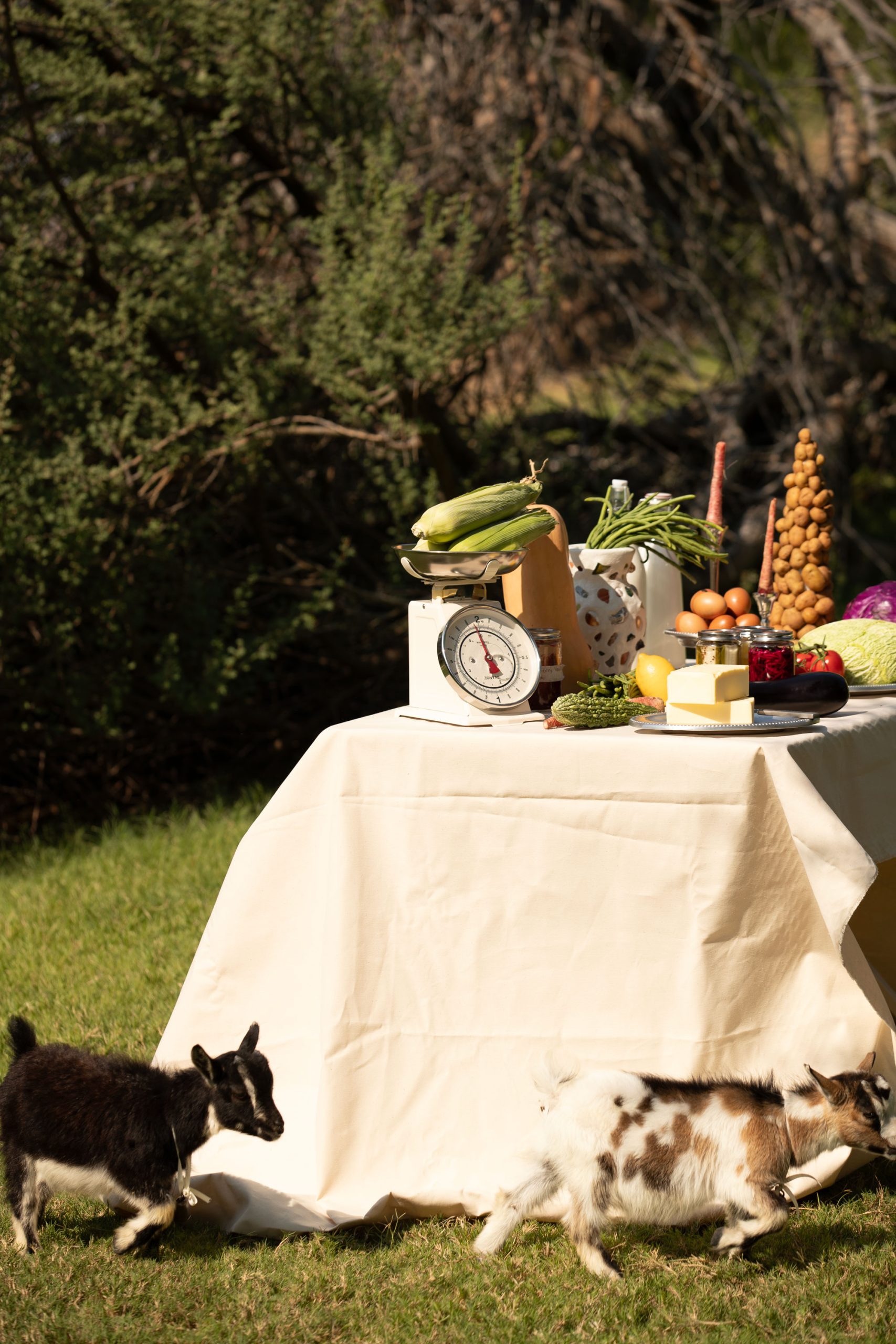
THE ART OF PRESERVING AND JAMMING
There’s something timeless, almost magical, about preserving and jamming. It’s a way of capturing the essence of fresh, ripe produce and sealing it in a jar, ready to be savoured long after the season has passed. Whether it’s the tangy sweetness of homemade strawberry jam or the rich, spiced flavour of preserved lemon, this age-old practice is not just about extending the shelf life of food—it’s about creating a little jar of joy, one spoonful at a time. But how did this practice become such a beloved tradition? Let’s dive into the delicious world of preserving and jamming!

A Brief History of Preserving: From Necessity to Art
Before refrigeration, preserving food wasn’t just a quaint hobby—it was essential for survival. Communities around the world developed techniques to extend the life of fruits, vegetables, and even meats, ensuring there would be food during the long winter months. What began as a necessity has evolved into an art form, with each region boasting its own unique flavors and methods. From ancient times, when fruits were preserved with honey, to the Middle Ages, where sugar became the preserving agent of choice, the art of preservation has woven itself into culinary traditions across the globe. Today, it’s not just about keeping food from spoiling; it’s about enhancing flavors, experimenting with ingredients, and creating something deeply personal.

The Joy of Jamming: A Burst of Flavor in Every Jar
Making jam is like bottling summer. The process is simple but rewarding—boiling fruit with sugar until it transforms into a sweet, spreadable delight. The beauty of jam-making is that it’s versatile; you can make jam from just about any fruit, from the classic strawberries and raspberries to more adventurous choices like figs or even tomatoes!
What makes jam so special is the way it preserves the flavor of perfectly ripe fruit.
Have you ever bitten into a summer peach and thought, “I wish I could eat this all year long?” Jam lets you do exactly that! And when you make your own jam at home, you control the ingredients, the sweetness, and even the texture, making it a true reflection of your taste.

While jams and jellies are perhaps the most well-known form of preserving, the world of preservation extends far beyond fruit spreads. You can pickle vegetables, make chutneys, or even preserve citrus fruits in salt, each method offering its own unique flavors and textures. Let’s break down a few popular preservation techniques.
1. Pickling
A TANGY, SALTY, AND SOMETIMES SPICY WAY TO PRESERVE VEGETABLES. PICKLES AREN’T JUST LIMITED TO CUCUMBERS; CARROTS, ONIONS, AND EVEN PEACHES CAN BE PICKLED FOR A BURST OF FLAVOR.
2. Chutneys
ORIGINATING FROM INDIA, CHUTNEYS ARE SAVORY, SWEET, AND SOMETIMES SPICY PRESERVES MADE FROM FRUITS AND VEGETABLES. THEY ADD A DELICIOUS PUNCH TO CURRIES, SANDWICHES, OR CHEESE BOARDS.
3. Fermentation
THINK SAUERKRAUT OR KIMCHI. FERMENTATION USES NATURAL BACTERIA TO PRESERVE FOOD, OFTEN RESULTING IN A UNIQUE TANGY FLAVOR AND ADDED HEALTH BENEFITS (HELLO, PROBIOTICS!).
4. Salt — Curing
PRESERVING FOODS LIKE LEMONS IN SALT NOT ONLY KEEPS THEM FROM SPOILING BUT ALSO ADDS A DEEP, RICH FLAVOR TO DISHES. PRESERVED LEMONS, FOR EXAMPLE, ARE A KEY INGREDIENT IN MANY MIDDLE EASTERN AND NORTH AFRICAN RECIPES.

WHY PRESERVING AND JAMMING ARE MAKING A COMEBACK
IN RECENT YEARS, THERE’S BEEN A RESURGENCE IN INTEREST AROUND TRADITIONAL FOOD PRACTICES LIKE JAMMING, PICKLING, AND FERMENTING. WHY? BECAUSE PRESERVING FOOD IS NOT ONLY FUN AND REWARDING, BUT IT ALSO FITS PERFECTLY INTO THE GROWING MOVEMENT TOWARD SUSTAINABILITY AND CONSCIOUS CONSUMPTION. WHEN YOU PRESERVE FOOD, YOU REDUCE WASTE, SAVE MONEY, AND CREATE HOMEMADE, ADDITIVE-FREE PRODUCTS. PLUS, THERE’S SOMETHING INCREDIBLY SATISFYING ABOUT TAKING CONTROL OF YOUR FOOD, UNDERSTANDING WHERE IT COMES FROM, AND BEING ABLE TO CREATE FLAVOURS THAT STORE-BOUGHT VERSIONS CAN’T MATCH.

THE PERFECT GUIDE: THE SQIRL JAM BOOK
IF YOU’RE READY TO DIVE DEEPER INTO THE WORLD OF PRESERVING, YOU *HAVE* TO CHECK OUT “THE SQIRL JAM BOOK” BY JESSICA KOSLOW. THIS BOOK IS A TREASURE TROVE FOR ANYONE INTERESTED IN MAKING HIGH-QUALITY, CREATIVE JAMS. KOSLOW, KNOWN FOR HER LA RESTAURANT SQIRL, HAS REDEFINED MODERN JAMMING, COMBINING UNUSUAL FLAVOR PROFILES WITH TRADITIONAL TECHNIQUES. THE RECIPES ARE FUN, ACCESSIBLE, AND PERFECT FOR BOTH BEGINNERS AND SEASONED PRESERVERS. FROM JAMS TO MARMALADES TO PRESERVED FRUIT, IT’S A MUST-READ FOR ANYONE WHO WANTS TO TAKE THEIR JAMMING GAME TO THE NEXT LEVEL.
WITH KOSLOW’S GUIDANCE, YOU’LL LEARN HOW TO TURN SEASONAL PRODUCE INTO UNIQUE, FLAVOR-PACKED PRESERVES THAT GO FAR BEYOND THE BASICS. YOU’LL ALSO GET TIPS ON THE BEST INGREDIENTS TO USE, HOW TO BALANCE SWEETNESS WITH ACIDITY, AND HOW TO TROUBLESHOOT COMMON PRESERVING ISSUES. WHETHER YOU’RE MAKING A CLASSIC STRAWBERRY JAM OR EXPERIMENTING WITH SOMETHING MORE DARING LIKE ELDERFLOWER AND GRAPEFRUIT MARMALADE, THIS BOOK WILL BECOME YOUR NEW FAVORITE KITCHEN COMPANION.

THE BEAUTY OF PRESERVING AND JAMMING IS THAT YOU DON’T NEED FANCY EQUIPMENT OR COMPLICATED TECHNIQUES TO GET STARTED. ALL YOU REALLY NEED IS:
1. FRESH PRODUCE
USE FRUITS AND VEGETABLES AT THEIR PEAK RIPENESS FOR THE BEST RESULTS.
2. A GOOD POT
A HEAVY-BOTTOMED POT IS PERFECT FOR COOKING DOWN FRUIT WITHOUT BURNING IT.
3. CLEAN JARS
STERILIZED JARS ARE KEY TO KEEPING YOUR PRESERVES FRESH FOR LONGER PERIODS
4. TIME AND PATIENCE
JAMMING AND PRESERVING ARE SLOW, MINDFUL PROCESSES. TAKE YOUR TIME, ENJOY THE PROCESS, AND DON’T RUSH!
START WITH A SIMPLE JAM RECIPE—MAYBE STRAWBERRY OR PEACH—AND WORK YOUR WAY UP TO MORE COMPLEX PRESERVES LIKE CHUTNEYS OR PICKLED VEGETABLES. EACH BATCH YOU MAKE IS AN OPPORTUNITY TO EXPERIMENT WITH FLAVOURS AND CREATE SOMETHING UNIQUE.
